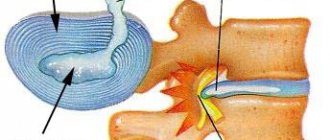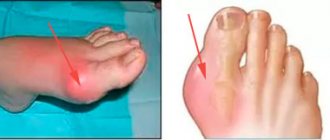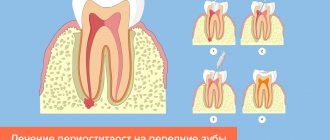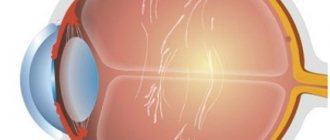Lower back pain is often referred to by terms such as lumbago or lumbodynia. Lumbago or “lumbago” is an attack of acute pain in the lower back, which is usually associated with hypothermia and stress. Lumbago occurs in many people and is often the cause of temporary disability. Often the cause of lumbago can be sports injuries or sprains, but sometimes the factor that triggers the pain remains unknown. Lumbago is characterized by pain without radiating to the legs. Low back pain (lumbago) may appear acutely and gradually progress throughout the day. Stiffness often occurs in the morning and gradually the stiffness turns into pain. Curvature of the spine (antalgic scoliosis) as a result of muscle spasm is also possible. The pain itself can be caused by muscle spasm, which in turn is associated with other causes. This could be overuse or sprained ligaments, sports injuries, herniated discs, spondyloarthrosis (spondylosis), kidney disease (infections or kidney stones). Sometimes the patient accurately determines the cause-and-effect relationship between the onset of malaise and stress, hypothermia, but often the pain appears without obvious reasons. Sometimes lower back pain can appear even after sneezing, bending over, or when putting on shoes. This can be caused by deforming diseases of the spine, such as scoliosis.
Unlike lumbago, the term lumbodynia refers to pain that is not acute, but subacute or chronic. As a rule, pain with lumbodynia appears gradually over several days. Pain may also occur in the morning and may decrease with physical activity. Lumbodynia is characterized by increased pain during prolonged static loads (sitting, awkward body position). It is also characteristic of lumbodynia that the pain decreases when lying down in a certain position. Patients with lumbodynia have difficulty performing normal activities such as washing or putting on shoes due to muscle spasms. Due to the disease, there is a decrease in the range of movements of the body (bending forward or, to a lesser extent, bending to the side or extension). Due to pain, the patient often has to change position when it is necessary to sit or stand. Unlike lumbago, muscle spasm is less pronounced and, as a rule, does not cover the entire lower back, and there are often signs of spasm predominance on one side.
Why does my lower back hurt?
Spinal diseases
A common cause of lower back pain is congenital anomalies and acquired diseases of the spinal column.
The nature of the pain syndrome varies. Pain caused directly by the pathological process, most often periodic, local, aching or nagging, is associated with the weather, physical activity, and being in an uncomfortable position. Due to muscle spasm, lumbago (lumbago) occurs - a sharp pain accompanied by limitation of movements. With many pathologies of the spine, lumboischialgia is observed - aching, burning or shooting pain in the lower back, radiating along the back of the thigh. Painful sensations are often found as part of radicular syndrome. They can be detected in the following diseases of the spinal column:
- Degenerative pathologies
: osteochondrosis, intervertebral disc protrusion, intervertebral hernia, spondylosis, spondyloarthrosis. - Congenital anomalies
: sacralization, lumbarization. - Polyetiological conditions
: spondylolysis, spondylolisthesis. - Vascular diseases
: cerebrospinal circulatory disorders. - Other diseases
: Forestier disease. - Secondary lesions of nervous structures
: lumbosacral radiculitis, lumbosacral plexitis, myelopathies of various origins.
Spinal curvature
Minor or moderate aching pain is observed in all types of curvature of the spinal column, which is associated with non-physiological redistribution of load, overstrain of the muscles and ligaments of the back. Pain occurs due to an uncomfortable body position, sleeping on a bed that is too hard or too soft. The symptom is accompanied by:
- lordosis;
- kyphosis;
- scoliosis;
- kyphoscoliosis;
- flat back syndrome.
Lower back pain
Osteoporosis
Pulling or aching pain in the lumbar and thoracic spine has long been the only symptom of osteoporosis. The pain syndrome is mild and intensifies after exercise, before changing weather conditions. The symptom is observed in the following types of osteoporosis:
- postmenopausal;
- juvenile;
- idiopathic;
- senile.
Similar pain is detected in patients with secondary forms of pathology caused by genetic diseases, endocrine disorders, chronic intoxication, and taking certain medications. Secondary osteoporosis can also occur against the background of malabsorption syndrome, liver disease, chronic renal failure, rheumatoid arthritis, and SLE.
Increased pain and increased duration of pain may be associated with the development of a pathological fracture. Other signs of injury are often not evident, so the fracture often goes undiagnosed.
Spinal injuries
The most common injury is a contusion of the spinal column. In mild cases, the pathology is manifested by moderate pain in the lower back, aggravated by movement, local swelling, and sometimes hematomas and hemorrhages. In case of severe bruises, neurological disorders are added to the listed symptoms.
A compression fracture of the lumbar spine occurs due to forced flexion of the torso. Characterized by sharp pain, holding your breath at the time of injury. Then there is an increase in pain when turning the body, and swelling of the soft tissues is detected. Palpation of the spinous process is painful. Other possible fractures include injuries to the arches, transverse processes, and spinous processes.
In addition, low back pain is found in patients with traumatic spondylolisthesis and vertebral subluxation. The painful sensations are paroxysmal, reminiscent of lumbago, complemented by a feeling of heaviness and numbness of the lower extremities.
Soft tissue and kidney injuries
Soft tissue bruise is accompanied by minor or moderate quickly subsiding local pain and slight swelling. Hemorrhages are possible. There is no blood in the urine. Kidney bruises manifest as pain and minor short-term hematuria. With moderate kidney injuries, the pain syndrome is intense, the pain radiates to the lower abdomen, groin, and genitals. A hematoma is visible in the lumbar region. In severe cases, severe pain and prolonged gross hematuria are observed. A state of shock develops.
Infections of the spine and spinal cord
Spinal osteomyelitis can be hematogenous, post-traumatic, contact, postoperative. The acute form of the disease is manifested by rapidly increasing pain in the lower back, combined with chills, fever, intoxication syndrome, and deterioration of the general condition. The pain is tugging, bursting, so intense that it prevents any movement, forcing the patient to freeze in bed. In chronic osteomyelitis, the manifestations are smoothed out, a fistulous tract with purulent discharge is formed.
Tuberculosis of the spinal column develops gradually. Initially, periodic deep pain is observed, intensifying after exercise, and increased sensitivity of the skin in the projection of the affected vertebrae. Stiffness of gait develops. Against the background of significant destruction of bone structures, the nature of the pain changes, since it is caused by compression of the nerve roots. The pain becomes burning, radiates to the legs, and is accompanied by paresthesia and numbness.
In patients with spinal epidural abscess, the pain is strong, deep, diffuse, combined with chills, hyperthermia, and muscle tension. Tapping on the spinous processes of the vertebrae is painful. As the pathology progresses, radicular syndrome occurs, then paresis and disturbances in the functioning of the pelvic organs develop.
Local inflammatory processes
Purulent processes in the superficial tissues and perinephric tissue are accompanied by intense pain in the lower back. Possible causes of pain are boils, carbuncles and paranephritis.
In the first two cases, an abscess forms in the skin, looks like a limited, sharply painful compaction with a diameter of 1 cm, purple or purple-bluish in color, with one or several rods in the center. The pain quickly intensifies, becomes tugging, throbbing, and deprives sleep. General hyperthermia and a slight or moderate disturbance of the general condition are noted.
With paranephritis, severe fever first occurs. Pain syndrome develops after 2-3 days. The pain is very intense, can radiate to the stomach or hypochondrium, and intensifies with walking, movement, and deep breathing. In some forms of paranephritis, the patient takes a forced position due to pain. The lumbar muscles are tense. Edema, local hyperemia, and hyperthermia are detected. The condition is serious.
Infectious diseases
Diffuse aching pain in the lower back, causing a desire to change body position, is characteristic of acute infections accompanied by fever and intoxication syndrome. In most cases, they are caused by myositis and are often combined with pain in the muscles of the limbs. Observed with influenza, sore throat, ARVI. Sometimes pain is caused by kidney damage. Infectious diseases accompanied by pain in the lumbar area include:
- hemorrhagic fevers;
- Japanese mosquito encephalitis;
- Ebola fever;
- foot and mouth disease;
- severe form of coronavirus infection;
- generalized forms of bacterial, fungal, viral infections.
In a number of patients, lower back pain is observed during a cytokine storm - an inflammatory reaction that develops against the background of severe infectious diseases. Epidemiological myalgia is accompanied by intense paroxysmal pain lasting up to 10 minutes, which appears not only in the lower back, but also in other parts of the back, in the abdominal wall, chest, and limbs. Repeated at intervals of 30-60 minutes. Combined with rhinitis, conjunctivitis, severe hyperthermia.
Other muscle lesions
Aching pain in the muscles of the lumbar region is determined after intense physical activity - performing strength exercises for the back muscles, prolonged stay in a forced position with a tense lower back. Myalgia subsides at rest, intensifies with movement, weakens after warming up, gentle warm-up, and disappears after a few days.
Myositis develops not only during infectious diseases, but also after hypothermia or overload, against the background of exogenous intoxication, and metabolic disorders. Accompanied by prolonged aching pain. There are also special forms of myositis:
- specific infectious myositis for syphilis and tuberculosis;
- idiopathic, juvenile dermatomyositis and polymyositis;
- polymyositis and dermatomyositis in oncological pathologies, systemic connective tissue diseases.
Chronic diffuse pain throughout the body, including the lower back, is observed with fibromyalgia. Combined with sleep disorders, asthenia, and neurotic disorders.
Other diseases
In addition to the listed pathologies, lower back pain can be bothersome in conditions such as:
- Tumors of the spine, spinal cord
: sarcoma, hemangioma, metastases, intramedullary and extramedullary neoplasms of the spinal cord. - Kidney diseases
: pyelonephritis, glomerulonephritis, urolithiasis, kidney infarction, renal vein thrombosis, kidney cyst, kidney cancer, purulent processes. - Hereditary diseases
: hereditary cerebellar ataxia of Pierre-Marie. - Exogenous intoxications
: abuse of phenylpropanolamine. - Pathologies of the heart and blood vessels
: Loeffler's endocarditis, abdominal aortic aneurysm. - Emergency conditions
: blood transfusion shock.
In diseases of the pelvis, irradiation of pain to the lower back is sometimes noted. The appearance of a symptom is possible in a number of female diseases, prostate cancer, proctitis, sigmoiditis.
Symptoms that accompany back pain
The clinical picture of spinal pain depends on the location:
| Cervical spine | Thoracic spine | Lumbar spine |
| Headaches and dizziness | Burning in the chest | Change in the number of urinations |
| Numbness and weakness of the hands down to the fingertips | Difficulty in inhaling/exhaling | Numbness and weakness of the lower extremities, including the buttocks and toes |
| Blood pressure surges | Feeling of tightness in the chest | Low sensitivity during bowel movements |
| Floaters and flashes in the eyes | Pain between and under the shoulder blades | Erectile dysfunction and decreased libido |
Diagnostics
Primary diagnosis is carried out by a traumatologist-orthopedist. If there are neurological symptoms, the patient is examined by a neurologist. The doctor interviews the patient and carries out an objective examination. According to indications, consultations with a surgeon, rheumatologist, urologist, and other specialists are prescribed. The diagnostic program may include:
- Neurological examination.
During the examination, the specialist evaluates reflexes, muscle strength, coordination of movements, deep and superficial sensitivity. - X-ray.
X-rays of the lumbar region show fractures, decreased height of intervertebral discs, other degenerative changes, space-occupying formations, signs of inflammatory processes, and spondylolisthesis. If necessary, standard radiographs are supplemented with functional studies. - Other neuroimaging techniques
. MRI is also used to clarify radiographic data. When performing a computed tomography, the structure of hard structures is studied in detail, and the condition of ligaments and intervertebral discs is examined using MRI. To exclude stenosis, myelography is performed. - Functional Research
. The condition of muscles and nerve conduction is assessed using electromyography, electroneurography, and evoked potential studies. - Lab tests
. To confirm the infectious nature of the disease and determine the pathogen, blood tests and microbiological examinations are performed. Serological tests are used to detect neuroinfections.
According to indications, ultrasound of the kidneys, prostate, pelvic organs, urine tests, ultrasound of the abdominal aorta, and other studies are performed.
Manual therapy
Treatment of lower back pain
Pre-hospital assistance
In case of traumatic injury to the spine, the patient must be placed on a backboard and immediately taken to a medical facility. For non-traumatic pain, you should reduce the load on your back and optimize your body position during work and rest. Acute pain syndrome is an indication for consultation with a neurologist.
Before being examined by a specialist, a single dose of analgesics is possible. For lumbago and lumboischialgia caused by previously diagnosed degenerative diseases of the spine, the use of warming and local anesthetic drugs is allowed. If an infectious process is suspected, local remedies are not indicated.
Conservative therapy
The basis of treatment is physiotherapeutic measures and drug therapy. The patient is prescribed a protective regimen. The following methods are used:
- NSAIDs
. Effective for acute and chronic pain in muscles and spine. Used in the form of tablets and topical agents. - Neurotropic vitamins
. Patients are administered B vitamins, which enhance the effect of drugs from other groups and help reduce pain. - Local anesthetics
. For persistent and acute pain, therapeutic blockades with anesthetics are performed. To improve the treatment outcome, painkillers are combined with glucocorticosteroids. - Physiotherapy
. Ultrasound, magnetic therapy, transcutaneous electrical stimulation, laser therapy, and medicinal electrophoresis are used. It is possible to prescribe massage, manual therapy, acupuncture.
Surgery
Taking into account the characteristics of the pathology, the following surgical interventions are performed:
- Instability: interbody fusion, transpedicular fixation, plate fixation.
- Tumors, osteoporosis, osteomyelitis, tuberculosis: sequestrectomy, vertebroplasty, kyphoplasty, corpectomy.
- Intervertebral hernias: discectomy, microdiscectomy, nucleoplasty.
- Narrowing of the spinal canal: laminectomy, facetectomy, puncture decompression of the disc.
In the postoperative period, analgesics and antibiotics are prescribed. Rehabilitation measures include exercise therapy, massage, physiotherapy.
When do you need to see a doctor as quickly as possible?
If the cause of back pain is overexertion or stress, it will subside after a few days. However, in cases where the pain only increases, urgent medical attention is needed.
Immediate consultation with a doctor is necessary in the following situations:
- it is not possible to find a body position in which the pain becomes weaker;
- recently had a back injury or bruise;
- the condition worsens at night;
- the patient's gait has changed;
- the patient has a fever;
- limbs weaken, go numb, tingling is felt;
- Painkillers don't help.









